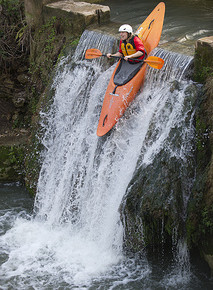
Not long ago, a colleague wrote a blog post about venue selection for event marketing mobile tours – the kind of tours with big trucks, elaborate footprints, and plenty of on-site activities. She discussed the merits of activating at state fairs compared to retail events, and made a strong case for choosing one or the other. I’d like to share a case study that champions state fairs for effective lead generation for a brand team.
Measuring Likelihood to Join
Last year, we renewed our work on measuring an event marketing mobile tour for a non-profit organization. The organization’s goal is to generate new leads at various events throughout the tour, like air and water shows, festivals, sporting events, and state fairs.
One of the key metrics is how likely an individual is to join the organization following their interaction with the brand team. We ask folks who visit the footprint and those who do not. That gives us a control group for comparison.
Survey results from all events indicated that 22% of individuals who visited the footprint (test) were likely to join the organization. Only 6% who didn’t visit (control) were likely to join – a 16 percentage point difference.
However, 31% of consumers who visited the footprint at state fairs (test) said they were likely to join the organization. Again, only 5% who didn’t visit (control) were likely to join – a 26 percentage point difference.
Not only was the impact of the event marketing experience stronger on join intent at state fairs (26 percentage point difference at fairs vs. 16 point difference overall), but that difference is almost entirely accounted for by those who actually visited the footprint (31% at state fairs vs. 22% overall).
What types of consumers were attending state fairs?
I studied demographic and psychographic profiles of individuals who attend state fairs and compared them to people who commonly attend other types of events. There were no significant differences in the proportion of men and women between state fairs and other events, nor did age distribution matter. (Men and 18-24-year-old adults historically have the highest likelihood to join.)
There were some small differences in psychographics that may account for some of the impacts at state fairs. We ask individuals if they have ever considered public service. Those who have are more likely to join the organization (34%) than those who have not (7%).
Half of the individuals who visited the footprint at state fairs said they have considered public service (53%). This was in greater frequency than those who visited the footprint at air & water shows (38%) and festivals (42%). However, there was no statistical difference between state fairs and Spartan (49%) or Motocross races (56%).
Conclusion
There was enough evidence to conclude that individuals at state fairs have a higher intent to join than those at air & water shows and festivals because the brand team is able to reach a higher concentration of folks with a propensity toward public service. What about the other events?
We engaged our client with this question. As it turns out, our survey results were validated by the lead figures. The brand team generates more leads at state fairs than other events because individuals attend state fairs to walk around and see all the attractions. Motocross and Spartan events are more challenging to collect leads because the people are focused on either competing or spectating.
There you have it. A case for activating an event marketing mobile tour at state fairs. We’ll see if the trend continues in 2015.
Photo Source: https://www.flickr.com/photos/stella12/
